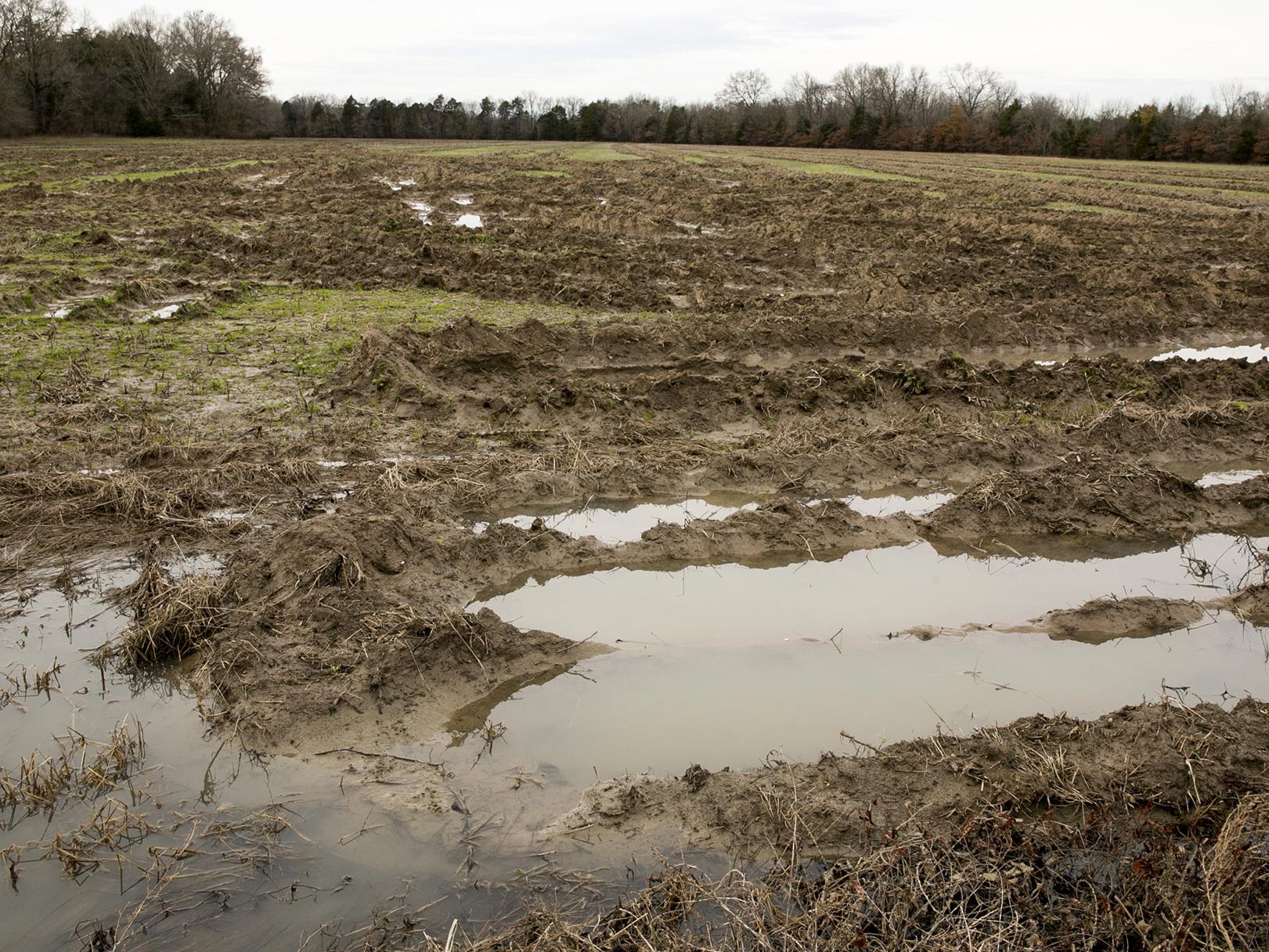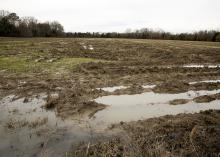Information Possibly Outdated
The information presented on this page was originally released on December 19, 2018. It may not be outdated, but please search our site for more current information. If you plan to quote or reference this information in a publication, please check with the Extension specialist or author before proceeding.
Row-crop values find thin margins in 2018
STARKVILLE, Miss. -- Cotton will not return to the throne as king of Mississippi's row crops, but the former monarch did provide one of the few bright spots in 2018 commodity value estimates.
Agricultural economists with the Mississippi State University Extension Service predict cotton and rice will be the only row crops to increase in value this year. Prices and production pushed cotton up about 10 percent to $623 million, as it remains fourth among the state's 16 agricultural commodities. Rice is forecast at $117 million, an increase of 13 percent, for the ninth spot.
Extension agricultural economist Josh Maples said significant declines in prices of the state's larger commodities, primarily soybeans, made 2018 a challenging year. Soybeans remained the third leading commodity, behind poultry and forestry. Prices averaged around $8.60 per bushel, compared to $9.33 in 2017.
Mississippi State University Extension Service grain crops specialist Erick Larson explains how raining conditions in the fall caused harvest equipment to damage fields. (Video by Linda Breazeale)
“All of our crop commodities have tight profit margins, and 2019 unfortunately looks like more of the same,” Maples said. “Soybeans remain the state’s largest and most valuable agronomic crop at more than $1 billion, but that’s almost 6 percent down from 2017.”
Extension cotton specialist Darrin Dodds said 2018 acreage and yields were similar to last year’s, maybe slightly higher.
“Yield averages for 2017 were 1,038 pounds per acre on 630,000 acres, and the 2018 forecast is for about 1,155 pounds,” Dodds said. “Production has been very strong over the last seven years with averages over 1,000 pounds per acre. In three years, we had averages over 1,200 pounds. Really, we are in a new era in terms of yields.”
Dodds said planting went well, followed by minor, weather-related challenges, but the biggest challenges came with frequent rains during harvest season.
Extension grain specialist Erick Larson said muddy conditions during harvest will require significantly more field work at planting time next spring. Fields harvested in the mud will require additional tillage to repair deep ruts and prepare fields for planting. Cool, rainy weather this winter will greatly restrict the soil’s opportunity to dry out enough to enable tillage before the spring.
“Not only will the additional field work drive up costs, but it will also delay planting. Some of these ruts will be holding water and delaying field work next spring,” Larson said. “While planting intentions for corn are anticipated to be up next spring, delays could force growers to other crops that are not planted as early, and potentially reduce productivity for all crops.”
Larson said corn yields most likely will be slightly lower than in 2017, when growers averaged 188 bushels per acre. Corn is the state’s No. 5 ag commodity with an estimated value of $351 million.
Extension soybean specialist Trent Irby said some soybeans are still in late-December fields.
“Yields are varied, but that’s not unexpected. Our yield estimate is currently 53 bushels per acre. The final yield could be up or down a little from this, but overall we had a very good crop across a lot of acres,” Irby said. “Our greatest challenge in 2018 was the weather, which ultimately impacted yield and the producer’s bottom line.”
Irby added that harvest conditions contributed to seed quality issues.
“Combine seed concerns with extreme harvest delays in some areas, and farmers had a very frustrating way to end the season,” he said.
Extension rice specialist Bobby Golden said an abnormally warm May hampered many aspects of rice production, including water management and herbicide performance.
“The abnormal heat in May led to many fields being flushed multiple times, and many postemergence herbicide applications had little activity, resulting in additional herbicide expense on much of the rice acres, especially those sown in late March to mid-April,” Golden said.
State average rice yields are expected to be similar to 2017 at about 7,300 pounds per acre.
“Low 2018 soybean prices should carry over to a limited increase in rice acres in Mississippi during 2019,” he said. “We project between 140,000 and 155,000 rice acres in 2019, compared with 135,000 in 2018.”
Six other crops finished out the list of agronomic commodities. Sweet potatoes, ranked No. 8, has an estimated value of almost $118 million, and hay follows rice as the 10th highest valued crop with an estimated value of $106 million.
Specialty crops, which include horticulture, fruits and nuts, lands at 11th place with a value of $104 million. Peanuts, No. 14, have a value of just under $19 million, wheat is valued at $12 million, and grain sorghum finishes the list with a value of $1.3 million.




